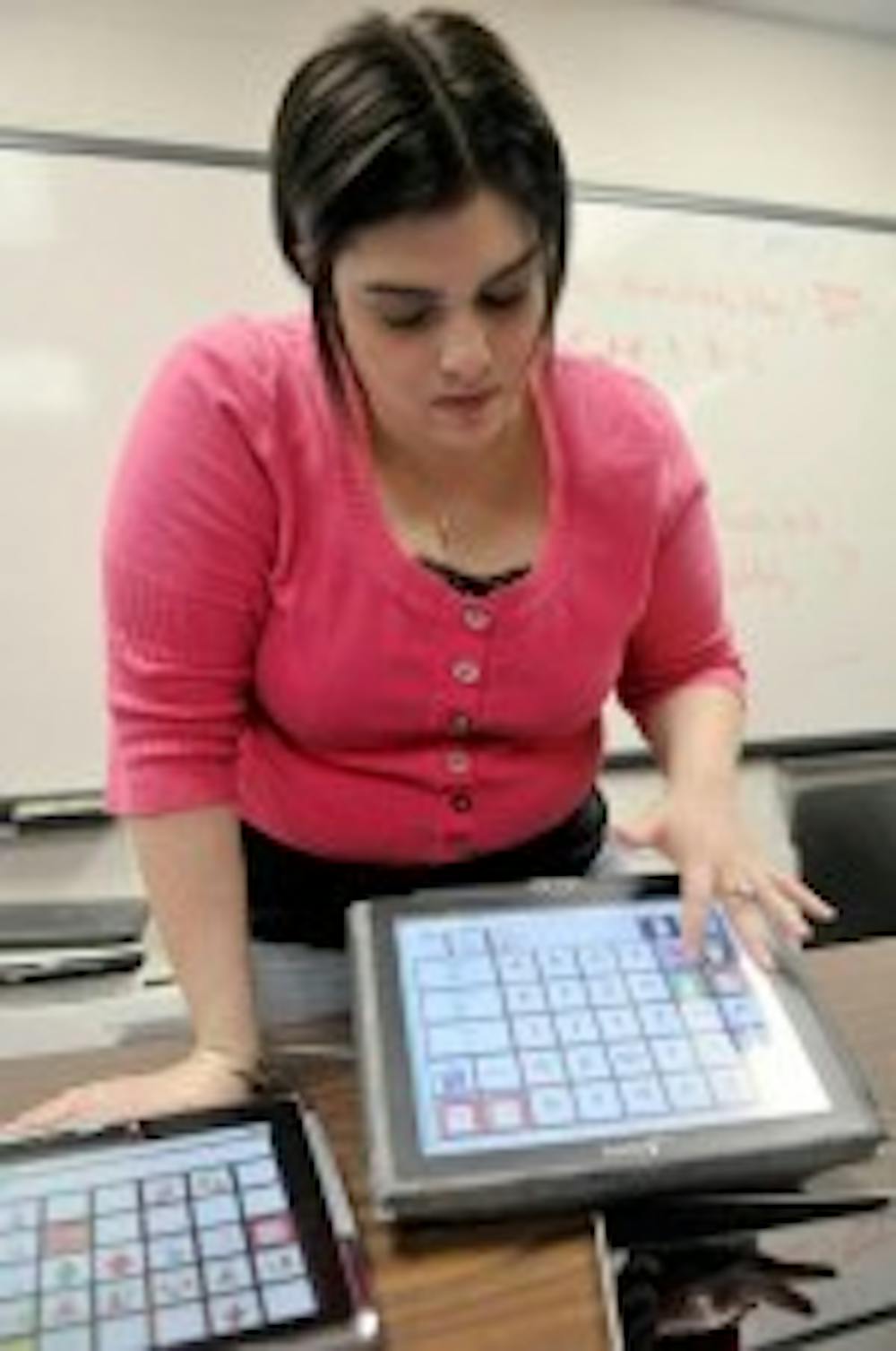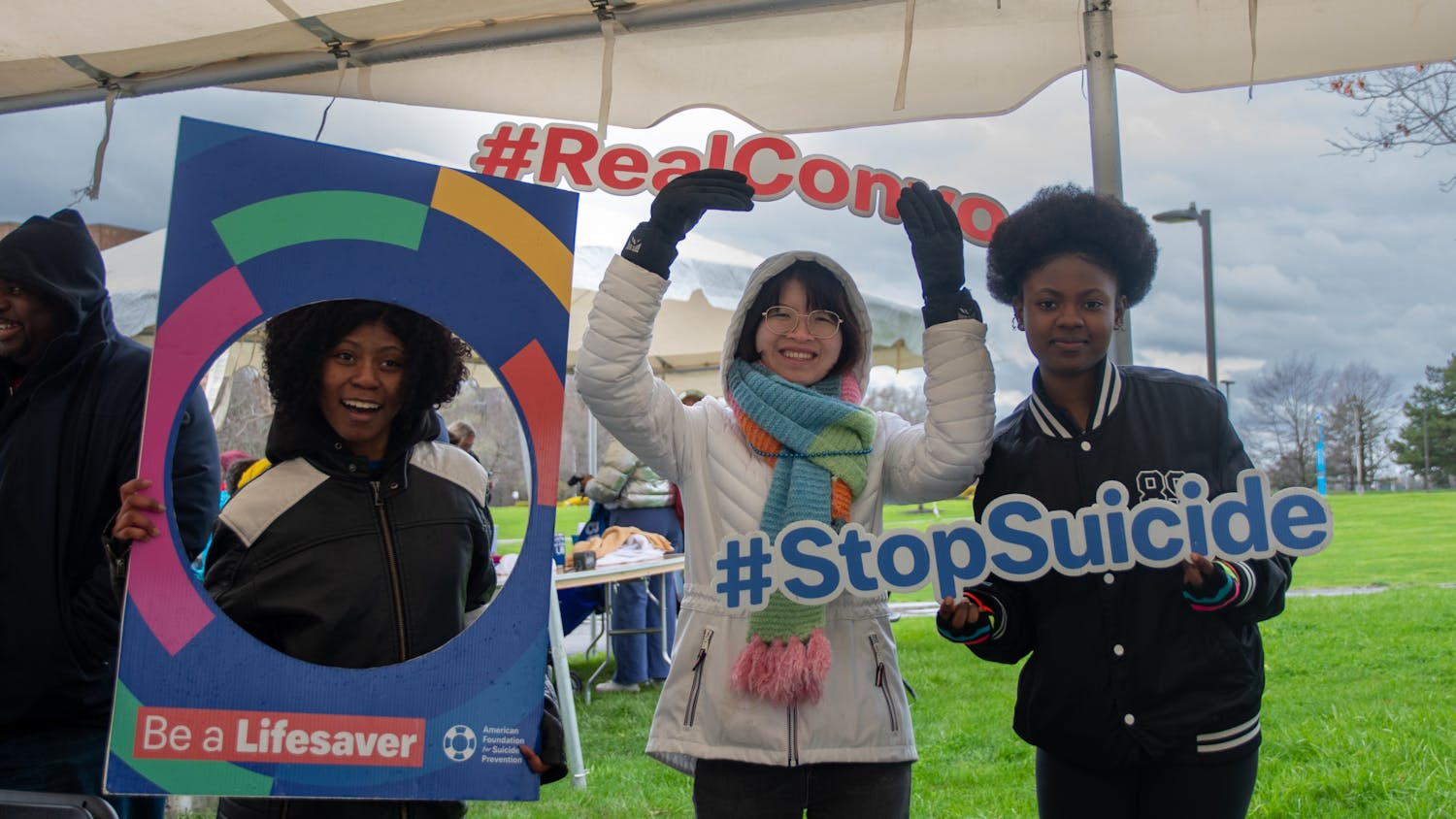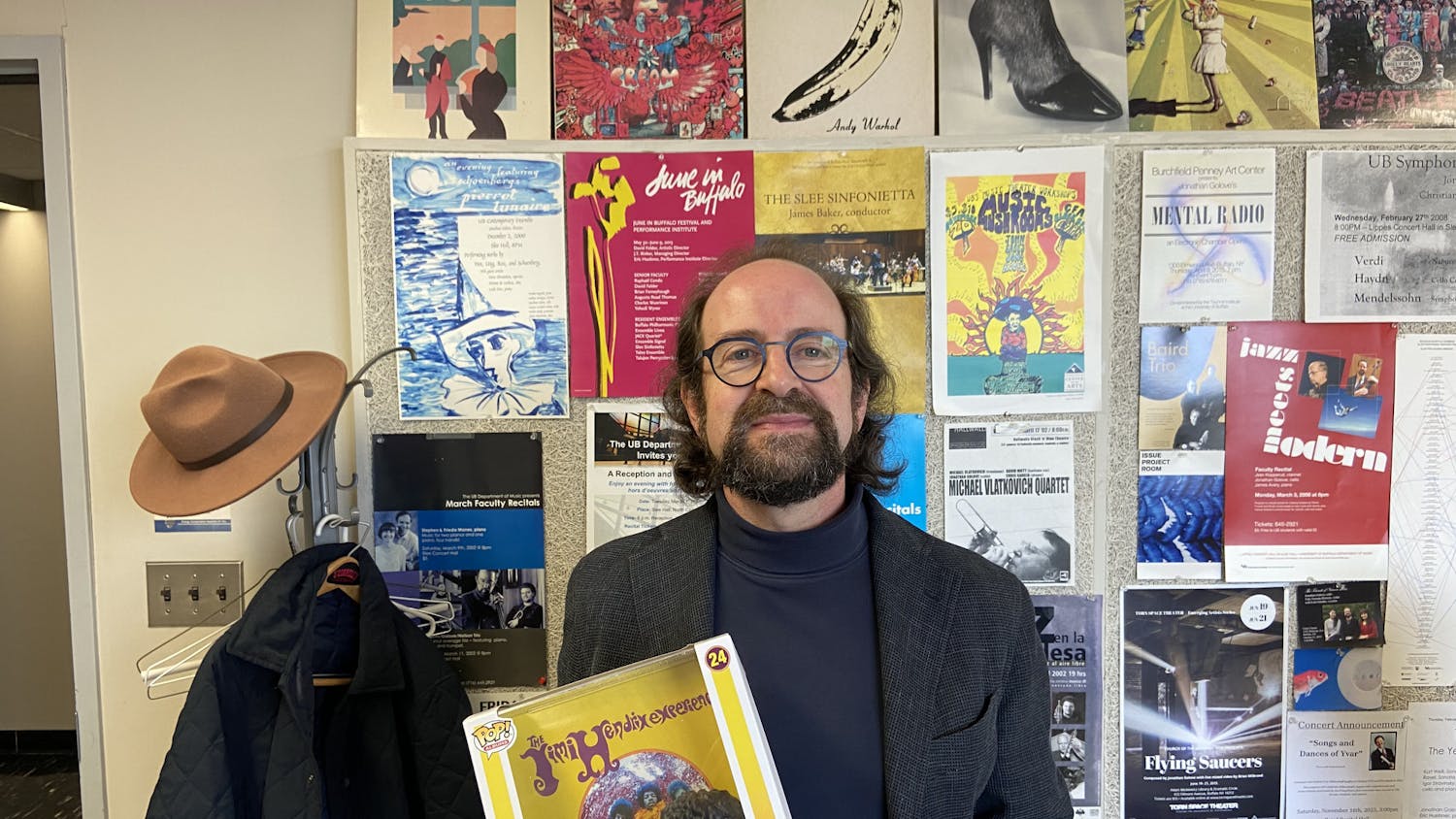(Disclaimer: The names besides Fulcher, Neth, and Higginbotham have been changed to protect client-doctor confidentiality).
A strong vocal vowel inflexion "aaah" from a four-year-old, a shape-sorter, and an inspiring babysitter set Katrina Fulcher's future. She was 16 years old and her parents were worried that her passion for acting would not lead to a stable career. They suggested Fulcher spend the day with her former babysitter, Shawna Slater, who worked as a speech-language pathologist.
Fulcher didn't know what speech-language pathology was at the time, but she decided to shadow Slater, especially since she didn't find her niche after shadowing lawyers, doctors, and stock brokers.
The epiphany happened when she watched Slater and 4-year-old Jenny Miller sit on the floor during a speech therapy session. Jenny had never spoken a sound in her life. Suddenly, when she and Slater were playing with a shape-sorter, she looked at Slater and handed her a block. She let out an "aaah" sound with a rising intonation, as if she was asking Slater to continue to play.
The whole room stopped. The girl's mother started to cry. Her daughter had a voice.
Slater kept eye contact with Jenny and coaxed more sounds out of her.
Fulcher stared in disbelief. She also knew she had found her calling.
Today, Fulcher, 26, is a speech-language pathologist and third year doctoral candidate in communicative disorders and sciences at UB. Her research and clinical work focuses on clients who have lost the ability to talk because of debilitating illnesses like Parkinson's, autism, and Lou Gehrig's disease.
"Unfortunately, in society people look at somebody that has this physical manifestation of a disability and they make judgments on them, make judgments on their intellectual abilities or what they can do or what they can offer to society, and I always want to prove those people wrong," Fulcher said.
She has.
Just ask 12-year-old Jared Newman, a cheery blond boy whose cerebral palsy makes it impossible for him to verbalize speech. Sarcastic and funny, Fulcher helps him reveal his personality and lets his interests in scary stories, haunted houses, and caskets shine through in sessions. He even jokes with Fulcher and calls her " the evil one" while she jokes back thanking him for the compliment.
Fulcher has been working with Jared for two years and has been using a touch screen device that helps him talk. Jared uses a DynaVox, with programmed features including folders of categories like family, holidays, and colors, as well as a keyboard Jared has access to. The device allows Jared to access the part of his body he has most control over, his knees.
As he sits in his chair, he uses his knees to control two red buttons, which connect to the screen. He also uses this device to access the Internet and complete school work. A text-to-speech function allows him to verbalize his thoughts.
Fulcher also uses the device to help Jared learn to read. Before she started working clinically with him, he didn't have that ability.
At a recent session, Jared read a full page of Mystery Photo at a first grade level, and there were only two words he didn't know out of 30.
"[I want] to show people that he can read, and he can learn if you give him the chance and the time and something that's structured," Fulcher said. "[I also want] to show everybody at his school he is smart, [and] he does not have an intellectual disability."
Newman's brother, Max, has noticed the effects Fulcher has had on Jared's reading and realizes she is patient at teaching Jared. Before Jared met Fulcher he couldn't spell at all. Now, he can break down words, read two to three sentences independently, understand more vocabulary, and can formulate entire sentences.
He was an emergent preschool-level reader because he wasn't taught reading skills. He still has words that might be difficult for him, but jumped two reading levels because of Fulcher's work.
Fulcher constantly motivates Jared, as she doesn't ever want him to feel that his cerebral palsy can get in the way of his success, and she reiterates this during her sessions.
"You've learned way too early that sometimes life isn't fair, and sometimes people aren't always nice," Fulcher said. "Every morning you're going to have this choice that you need to make where you're either going to show the world that everything they think about you is wrong and you're going to show them every single day, every single sentence how smart you are, and how funny you are, or you can sit in a corner and people will just pass you by."
Barb Neth, a speech-language pathologist and Fulcher's colleague, has worked with Jared since he was 5 years old. According to Neth, Jared has blossomed since his sessions with Fulcher began. She believes it is crucial that he learn to read and write using his device because he's non-verbal.
"I've seen significant improvements in his reading skills," Neth said. "This is a bright little kid that nobody directly ever taught how to read."
Part of Fulcher's appeal, Neth said, is her dynamic personality and desire to always create ways to help her clients improve. If there is a conflict with a client's interest, she wants to make sure his or her well-being is placed in the forefront.
Fulcher adapts her teaching skills to meet the learning needs of each particular person.
When Fulcher works with clients, she motivates them based on their interests. Fulcher uses Jared's love of scary stories and uses the vocabulary from those pieces to spark his interest during sessions. Fulcher is also adamant about being open and honest about what she does during her time with Jared and what her goals are so he can be an active member in his personal progress.
"She tempers her deep caring and responsibility for her clients, [and] she doesn't go over the edge into pity," Neth said. "She has a nice balance there."
Fulcher's mother, Gina, 49 of Lockport, said her daughter never wavered once she decided to study speech-language pathology. She went to Elmira College for four years and then on to UB for her Master's and Ph.D.
"She is very focused," Gina said. "It's really difficult in a Ph.D. program. Every time you keep on going higher and higher up on the education scale there's always people there trying to break you down."
She realizes her daughter does not succumb to this, however, and describes her as hopeful, even when her studies become difficult. Fulcherhas continued to study in this field for 10 years, and looks forward to learning and meeting the challenges.
Jeff Higginbotham studies people with severe disabilities, continues to develop technology to help them communicate, and has mentored Fulcher for her past four years at UB.
Fulcher decided to work with Higginbotham because of his research in naturalistic social communication. He studies individuals who use technology to communicate and continues developing technology for conversing about daily topics, including making friends, talking about politics, and current events. Higginbotham examines how people are able to accomplish these tasks and how technology can be influenced.
This field, called Augmentative and Alternative Communication (AAC), uses devices to help non-verbal people communicate.
AAC devices are assistive technology and cater specifically to each person who requires this service. AAC devices can be as simple as someone using a white board and writing, or pointing to letters to spell out words.
The devices can also be as complex as head-tracking, which includes slight head movements that can control the screen, or eye-tracking which uses infrared cameras to catch pupil and eye movement. These machines can also be touch screen or have keyboards, and users can type or select images or categories they want using a button that runs a text-to-speech component so the computer reads the text out loud.
Higginbotham is also a founder of the AAC-RERC, the Rehabilitation Engineering Research Center on Communication Enhancement, which is funded by the National Institute on Disability and Rehabilitation Research. Fulcher's work is also funded through AAC-RERC.
Right now, Fulcher's main goal is to use the technology they research and continue developing it to give people the ability to show their personalities and to say everything they want to say.
"It's really incumbent on the speech-language pathologist to provide the right kinds of technical assistance so that an individual can communicate with their family members, with their doctors, and with their friends during that part of their life," Higginbotham said. "[Fulcher's] work was really instrumental in giving [people]...that ability."
Although at times her job and Ph.D. program can be stressful, she stays cheery with comedy. On weekends, she performs improv with Buffalo Comedy Sportz. She's been doing it for over a year, and it's helped connect her love for performing with helping people.
For Fulcher, the people she worked with who suffered from illnesses have been some of the funniest people she's met, and full of sarcastic wit. Her clients realize how necessary it is to make jokes and laugh, and even break the stereotypical taboo of making jokes about having disabilities.
"[They tell me] 'You have to look on the positive side,'" Fulcher said. "'You have to have fun. You have to make a joke of it or else this will just get you down every day that you have this illness.'"
After joining Comedy Sportz she learned she needed to laugh. Performing in Comedy Sportz gave her the confidence and courage to even joke back with her clients.
"It's a time where I can shut the analytical part of my brain off and just really live in the moment," Fulcher said. "I love being up there, I love being goofy, I love making people laugh and clap and have a good time, and it's a huge adrenaline rush."
Fulcher realizes that when people laugh and make jokes they're already thinking on the positive side and turning negative attitudes into positive ones.
Like all good comedians, she integrates her job into her routine.
For Halloween, one of her clients with Lou Gehrig's disease dressed up as Lou Gehrig, the famous New York Yankee player, which surprised many people. Fulcher realized, however, that it's good to joke and maintain a positive attitude with her clients. It's OK to make light of their illnesses to make it easier on her clients and herself.
She even made her Comedy Sportz jersey flaunt the number 4, Lou Gehrig's Yankee number, to represent the people she works with.
Fulcher also knows that her work is critical to giving terminally ill people a final word.
She learned that lesson early, just after she left college when she started working with Jim McCarthy, a lawyer who contracted Lou Gehrig's disease (ALS) in his late 50s. McCarthy went from being able to talk, walk, and drive, to only having residual movement in his pointer finger and thumb on his left hand and eye gaze.
McCarthy was diagnosed with ALS in December 2008, and Fulcher started seeing him in June 2009.
During the year she worked with him, Fulcher watched helplessly as the once-gregarious lawyer lost his ability to communicate vocally. He was living his last months and Fulcher knew McCarthy still had a lot to say to his family and friends. Her main goal was for him to say everything he wanted to say and to leave a legacy.
ALS patients lose motor functions quickly and have a life expectancy of between two and five years. Fulcher taught McCarthy to type what he wanted to say on a keyboard using his thumb, including one of her most memorable moments thus far.
McCarthy programmed "happy birthday" for his daughter's birthday and as she walked down the stairs, he pushed the device to sing happy birthday to her. His daughter had the biggest smile on her face.
"That's what a device needs to do, because that's what's important," Fulcher said. "Nothing is more important than telling your daughter 'happy birthday.'"
McCarthy taught his daughter it's important to leave something behind, and that everyone has a story and legacy he or she wants to leave behind. Fulcher helped him, and many other terminally ill patients, leave theirs.
"I loved the feeling of working with them and their families, and the fact that you got to have this impact, giving them something back that they had lost," Fulcher said.
Then on May 4, 2010, Fulcher showed up for her regularly scheduled session with McCarthy and learned he had passed away an hour before. It had been less than two years since the initial diagnosis.
Dazed, Fulcher got in her car, called Higginbotham and sobbed.
Still, her greatest consolation was that in his final months he had managed to say almost everything he wanted to say to his family.
"I did something good for him," Fulcher said. "Me being there was a positive thing...He was able to talk to his wife, he was able to say something...so I just said to myself, 'I did my job, he was a great person, he taught me so much, he wanted to leave something behind. I'm now going to make sure that he leaves something behind because everything that I do, all of my research, why I still want to get my Ph.D., is because of working with him.'"
Email: arts@ubspectrum.com





